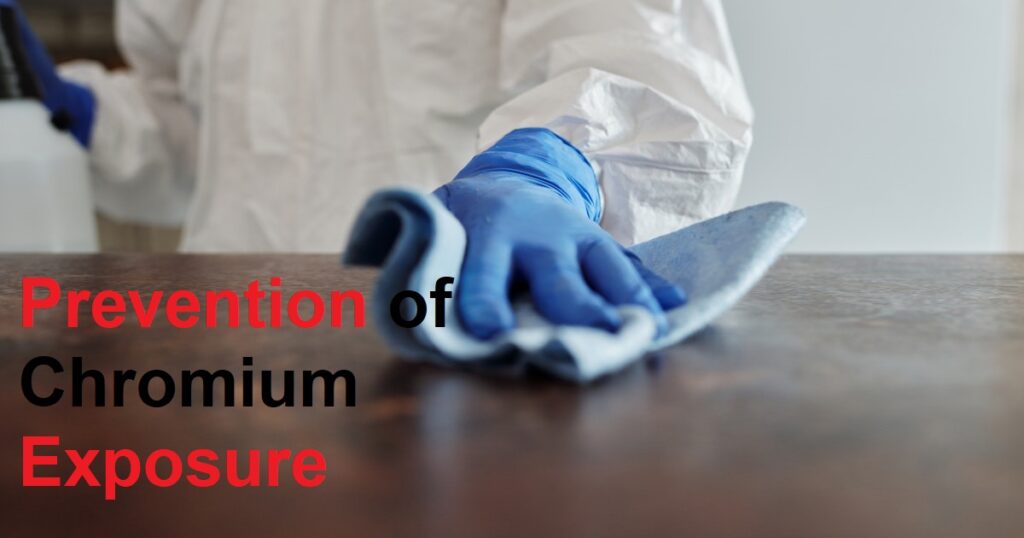Chromium is a naturally occurring element that can be found in rocks, soil, plants, and animals. It is widely used in a variety of industrial processes, such as the production of stainless steel, leather tanning, and electroplating. Although chromium is an essential nutrient for the human body, exposure to certain forms of chromium can pose serious health risks. In this article, we will discuss the health risks associated with exposure to chromium, including causes, symptoms, and prevention measures.
Introduction to Chromium Exposure
Chromium exists in several forms, but the two most common forms are trivalent chromium (Cr III) and hexavalent chromium (Cr VI). Trivalent chromium is an essential nutrient that is required in small amounts for the proper functioning of the body. It is found in foods such as meat, grains, and fruits. Hexavalent chromium, on the other hand, is a toxic form of chromium that is produced through industrial processes. It is highly carcinogenic and can cause a range of health problems.
Causes of Chromium Exposure
Exposure to hexavalent chromium can occur through inhalation, ingestion, or skin contact. Some of the most common sources of chromium exposure include:
1. Industrial Processes
Industries such as steel production, electroplating, leather tanning, and pigment production can release hexavalent chromium into the air and water.
2. Consumer Products
Certain consumer products, such as chrome-plated car parts, paints, and dyes, can contain hexavalent chromium.
3. Drinking Water
Chromium can also leach into drinking water from natural deposits or through contamination from industrial processes.

Symptoms of Chromium Exposure
The symptoms of chromium exposure can vary depending on the level and duration of exposure, as well as the form of chromium. Some of the common symptoms of hexavalent chromium exposure include:
1. Respiratory Problems
Inhaling hexavalent chromium can cause respiratory problems, such as shortness of breath, coughing, and wheezing.
2. Skin Irritation
Contact with hexavalent chromium can cause skin irritation, such as redness, swelling, and itching.
3. Gastrointestinal Problems
Ingesting hexavalent chromium can cause gastrointestinal problems, such as abdominal pain, vomiting, and diarrhea.
4. Increased Cancer Risk
Long-term exposure to hexavalent chromium can increase the risk of lung cancer, nasal cancer, and other types of cancer.

Prevention of Chromium Exposure
Preventing exposure to hexavalent chromium is essential for protecting human health. Here are some measures that can be taken to prevent chromium exposure:
1. Personal Protective Equipment
Workers who are exposed to hexavalent chromium should wear personal protective equipment, such as gloves, respirators, and eye protection.
2. Proper Ventilation
Industries that use hexavalent chromium should have proper ventilation systems in place to reduce exposure to workers and the environment.
3. Water Treatment
Water treatment facilities can remove hexavalent chromium from drinking water through filtration and chemical treatment.
4. Proper Disposal
Proper disposal of industrial waste that contains hexavalent chromium is essential for preventing environmental contamination. Industries should follow local and national regulations for the disposal of hazardous waste.

Conclusion
Exposure to hexavalent chromium can have serious health consequences, including respiratory problems, skin irritation, gastrointestinal problems, and increased cancer risk. It is essential to take preventive measures to reduce exposure to hexavalent chromium, such as using personal protective equipment, ensuring proper ventilation, treating water, and properly disposing of hazardous waste. By implementing these measures, we can protect human health and the environment from the harmful effects of hexavalent chromium exposure.
FAQs
- What are the most common sources of hexavalent chromium exposure?
- The most common sources of hexavalent chromium exposure are industrial processes, consumer products, and drinking water.
- What are the symptoms of hexavalent chromium exposure?
- The symptoms of hexavalent chromium exposure can vary, but common symptoms include respiratory problems, skin irritation, gastrointestinal problems, and increased cancer risk.
- How can we prevent hexavalent chromium exposure?
- We can prevent hexavalent chromium exposure by using personal protective equipment, ensuring proper ventilation, treating water, and properly disposing of hazardous waste.
- Can hexavalent chromium be removed from drinking water?
- Yes, hexavalent chromium can be removed from drinking water through filtration and chemical treatment.
- What are the long-term health effects of hexavalent chromium exposure?
- Long-term exposure to hexavalent chromium can increase the risk of lung cancer, nasal cancer, and other types of cancer. It can also cause other health problems, such as liver and kidney damage.
